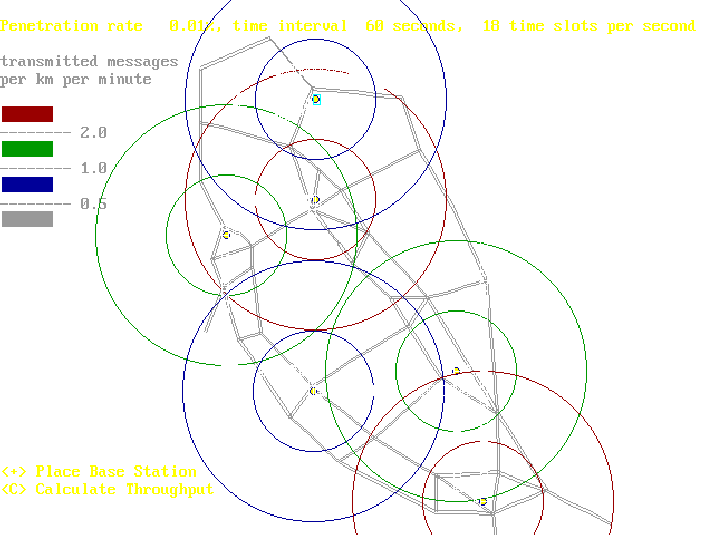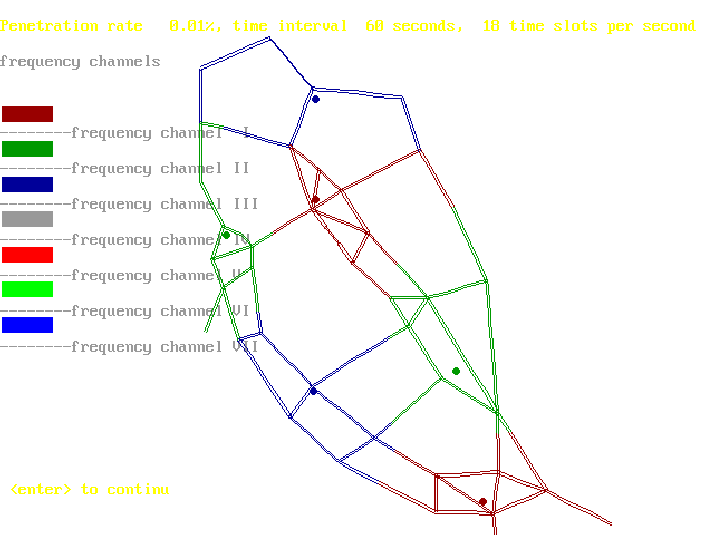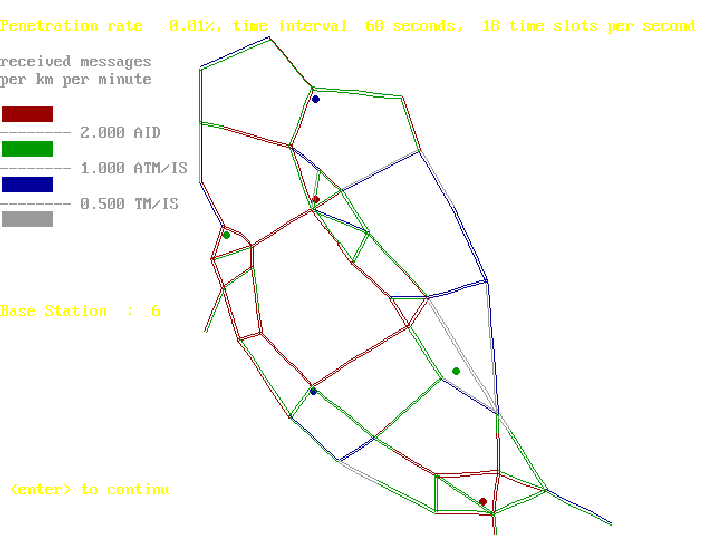
 |
JPL's Wireless Communication Reference WebsiteChapter: Network Concepts and Standards
|
The base station transmits a polling message requesting one specific probe vehicle in its cell to responds by transmitting its traffic message. When the probe report is successfully received the base station polls the probe vehicle next in turn. Whenever the transmitted probe report is not successfully received, the base stations re-polls the same probe vehicle and may repeat this process a limited number of times before the base station proceeds with the next probe vehicle. The polling algorithm periodically repeats this procedure, so messages are received from all vehicles on a periodic basis.

PROMOT Screen Dump: Base station locations for polling access scheme.
The above screen dump gives an possible location of base stations for polling access scheme. The circles indicate the area in which the probability of successful reception are 90 and 10%, respectively, under the assumption that no co-channel interference is present. Results have been obtained for a "40 log d" path loss and Rayleigh fading.
The next screen dump includes the effect of co-channel interference. For every segment of each road link, the base station with large probability of successful reception is found. because of interference, this is not necessarily the nearest one.

Screen Dump: Coverage per base station
Assuming that every vehicle is polled by its nearest base station, this curve gives the throughput of messages from each road segment. This throughput depends on

The polling algorithm with retransmission ensures a virtually flat probability of successful reception. If messages lost due to fading were not retransmitted, areas far away from a base station would have lower throughput.



![]()
JPL's Wireless Communication Reference Website
© Marcel Westerman and
Jean-Paul M.G. Linnartz, 1993, 1995.